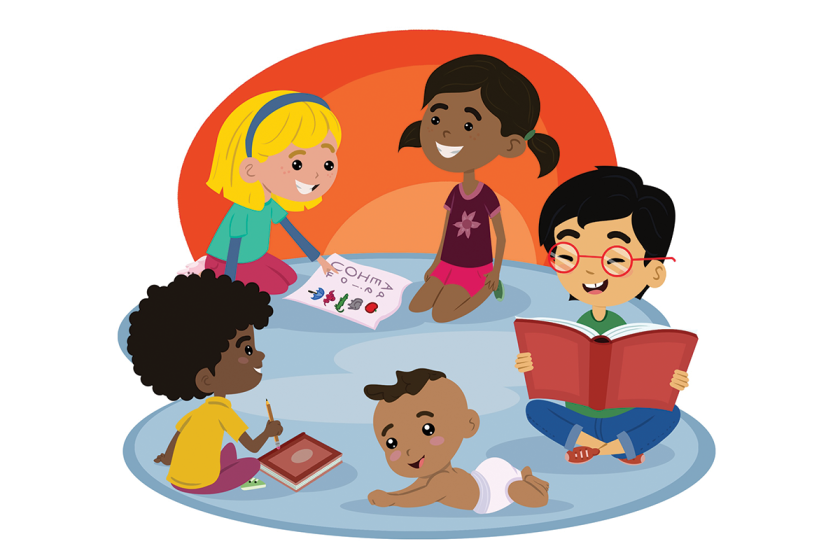Read colorful picture books and limit screen time to enhance your baby’s visual development

- Share via
Healthy vision is integral to a baby learning early literacy skills. To support literacy and vision development, parents should read to their child early on, limit screen time and watch out for any red flags as vision develops, pediatrician Edward S. Curry said.
Find expert tips, must-read books and local resources to help your child get hooked on reading.
Curry, who worked in pediatrics for more than 40 years at Kaiser Permanente in Tustin, Calif., shared advice for parents to make sure their babies’ vision develops healthily.
In a baby’s first few months, parents can begin early literacy by reading to their child with colorful picture books, especially with bright contrasting colors. Seeing the contrast between bright colors or between black and white, such as on a checkerboard, can enhance a baby’s vision, Curry said.
One red flag parents can look out for is a child’s eyes crossing, which may signify a visual impairment. If a child’s eyes cross inward or outward, they should be seen by a pediatrician and may need to see an ophthalmologist for further evaluation, Curry said.
Parents should also look out for the red reflex, when light reflects off the back of the eye and is visible in the pupils, commonly seen in flash photos when the eyes reflect red. If a child’s eyes do not reflect the reddish-orange color, this may indicate an eye condition and should be evaluated by an ophthalmologist.
A baby’s vision develops rapidly. At about 1 month, babies may focus on their parent or caregiver but may be most interested with colorful objects close to their field of vision.
Within the first two months of life, babies begin to recognize faces, see the brightness of color and develop depth perception. At about 3 months old, a baby’s eyes begin to focus and track objects. Parents can encourage vision development through activities like holding a bright, colorful toy in front of a baby and moving it back and forth, to allow them to track it visually.
At around 5 months old, a baby begins to recognize and recall. Parents can help their baby develop visual memory by playing hide-and-seek games with their face or with toys.
Reading by 9’s guide to reading readiness. Find expert tips, book recommendations and resources for parents of kids under age 5.
Children’s visual and sensory input enhances their brain development and socialization, so it’s important for a baby to engage with the world around them, Curry said.
“We don’t recommend a lot of screen time because then you’re just focusing on one visual type of activity,” Curry said. “You’re not engaging in the full breadth of seeing the flowers and the trees and the faces and the smiling, and learning about emotions — happiness, sadness, crying — babies can all pick up on that and it’s all due to visual input.”
This piece is a part of the L.A. Times parent reading guide, A guide to early learning: What to know for reading readiness. Find expert tips, book recommendations and local resources meant to help parents of kids under 5 incorporate reading into a child’s daily life.

